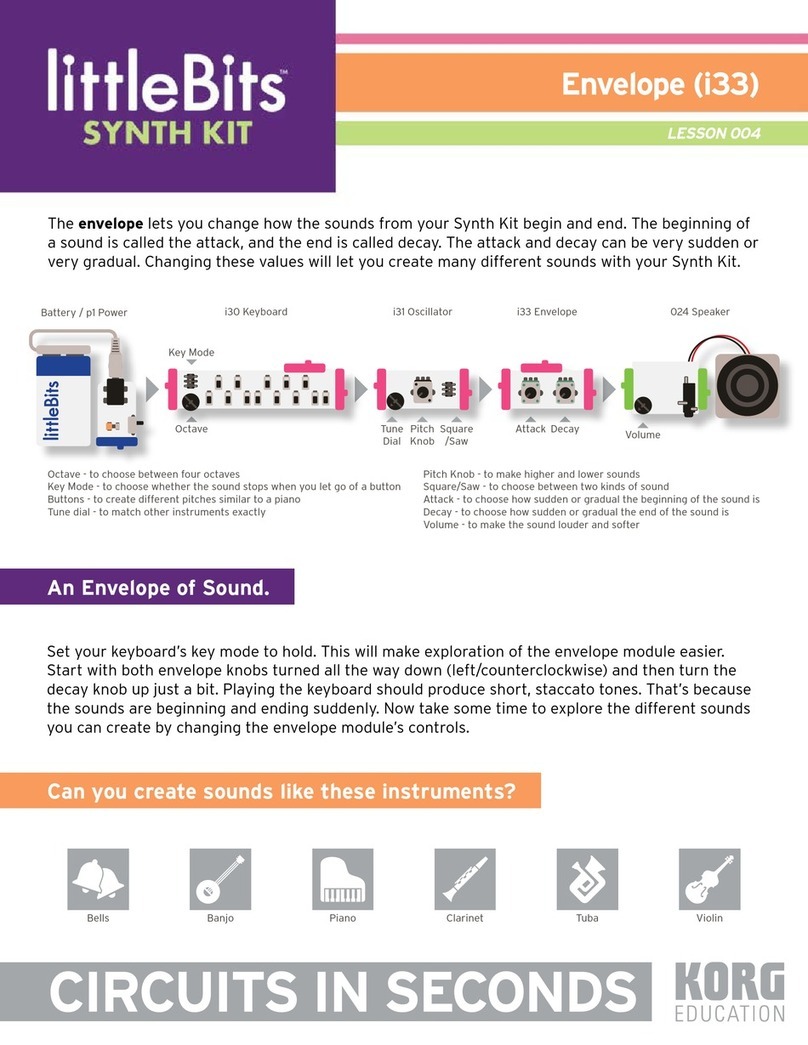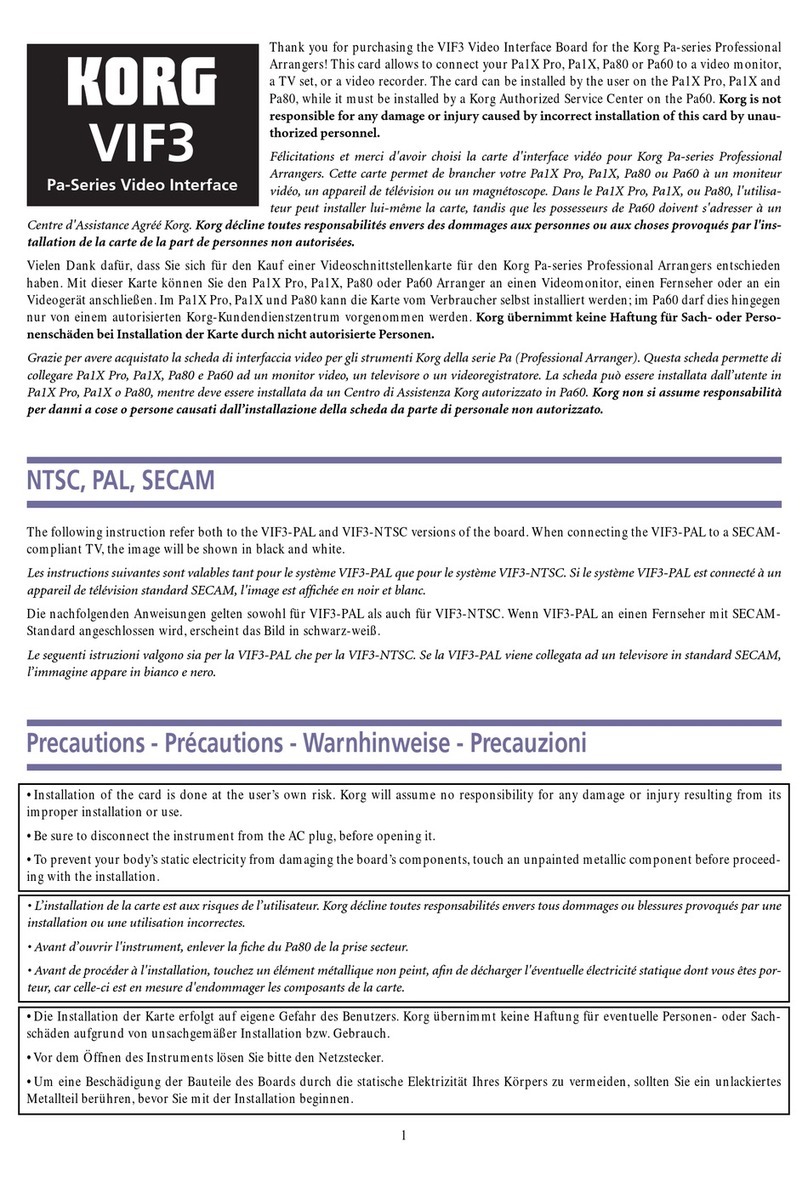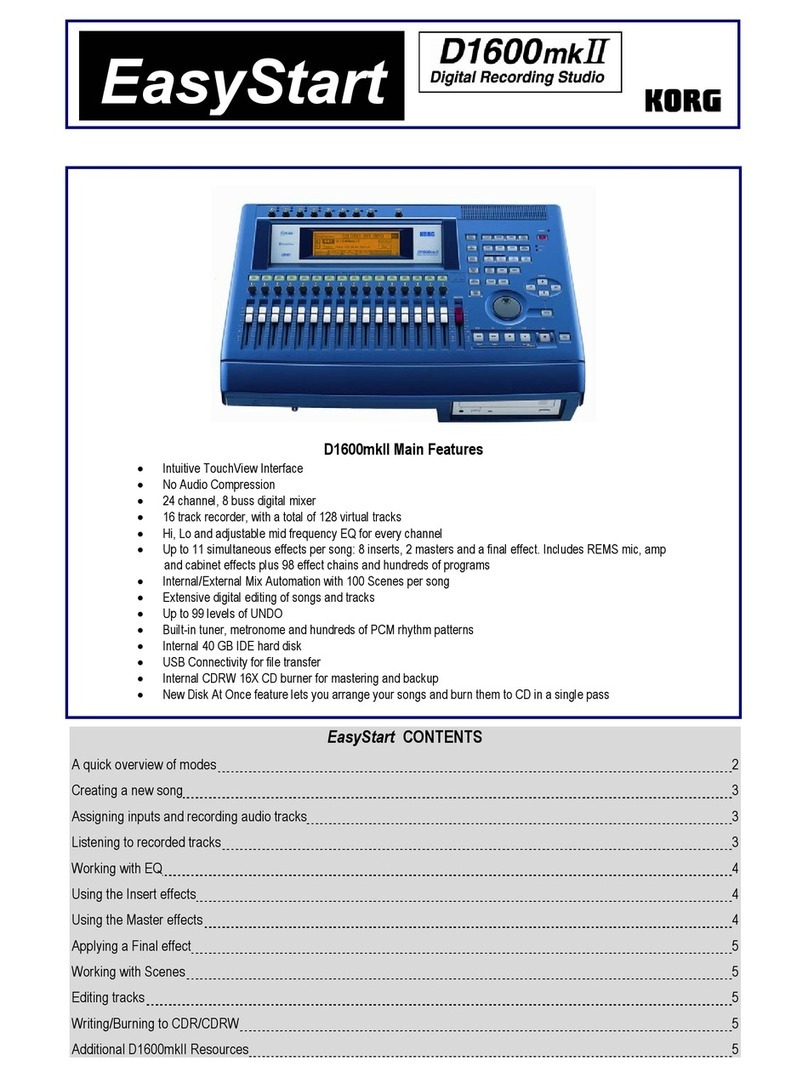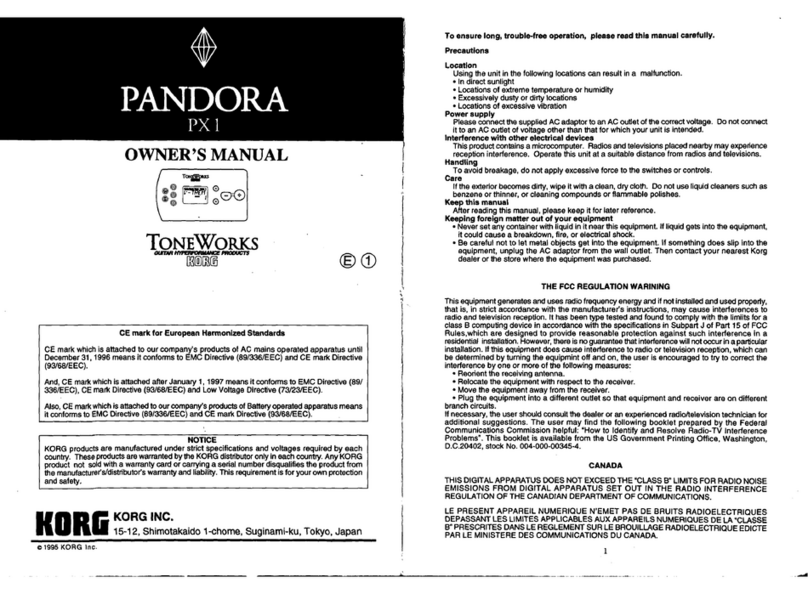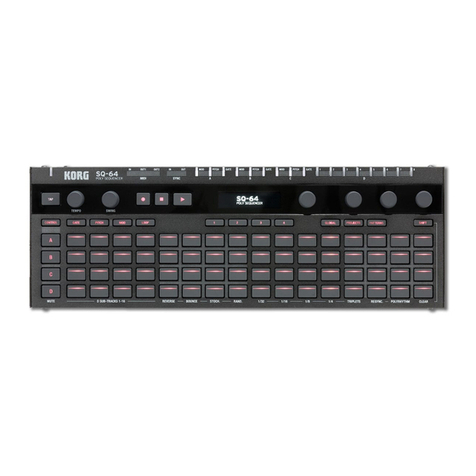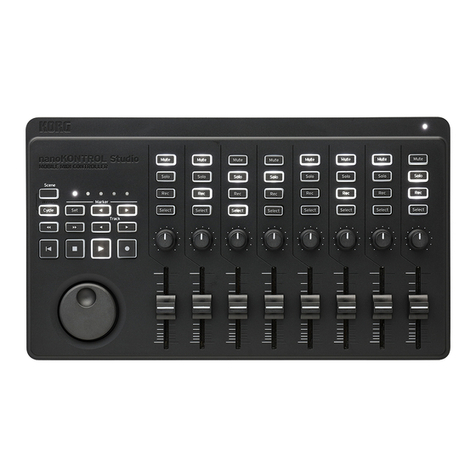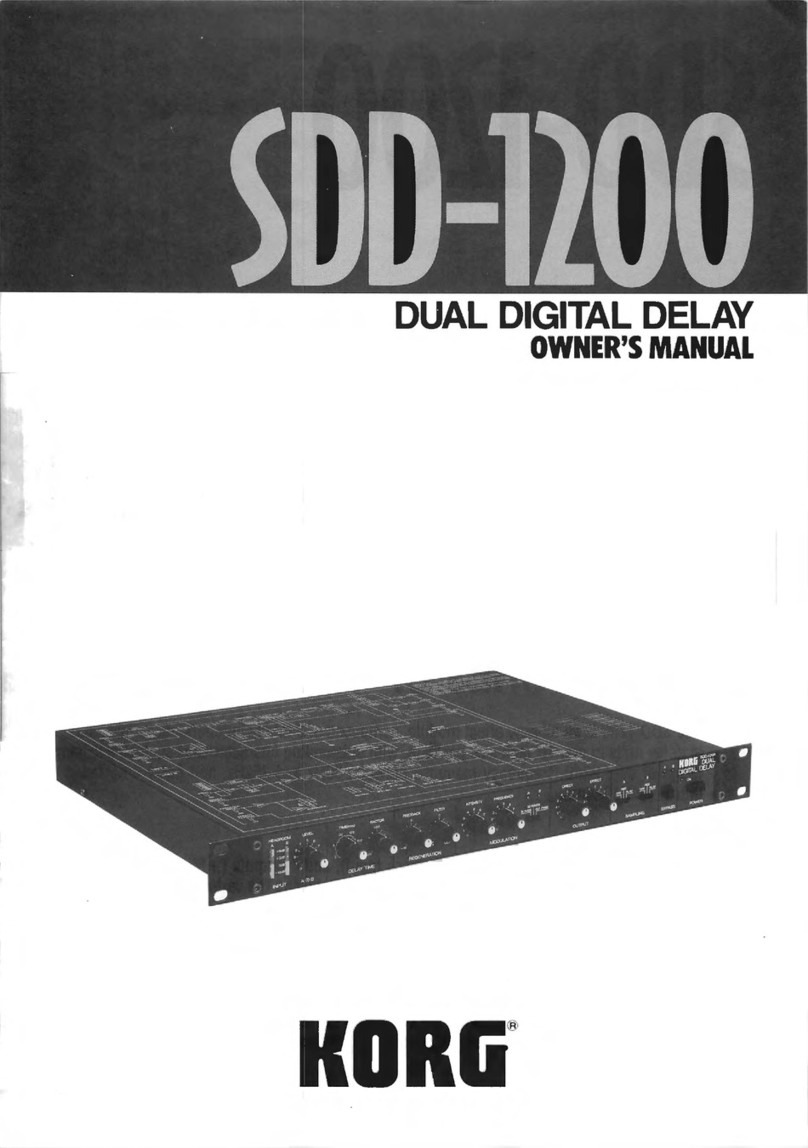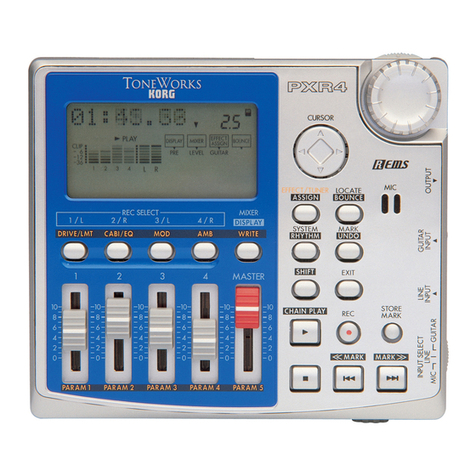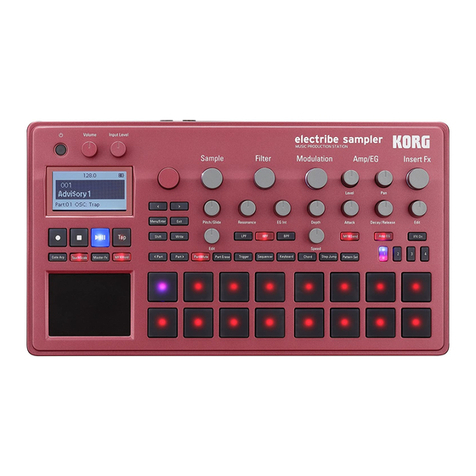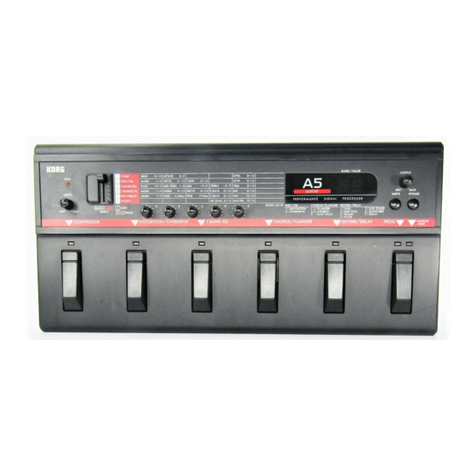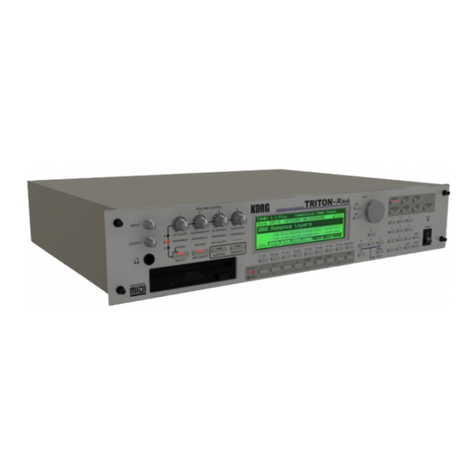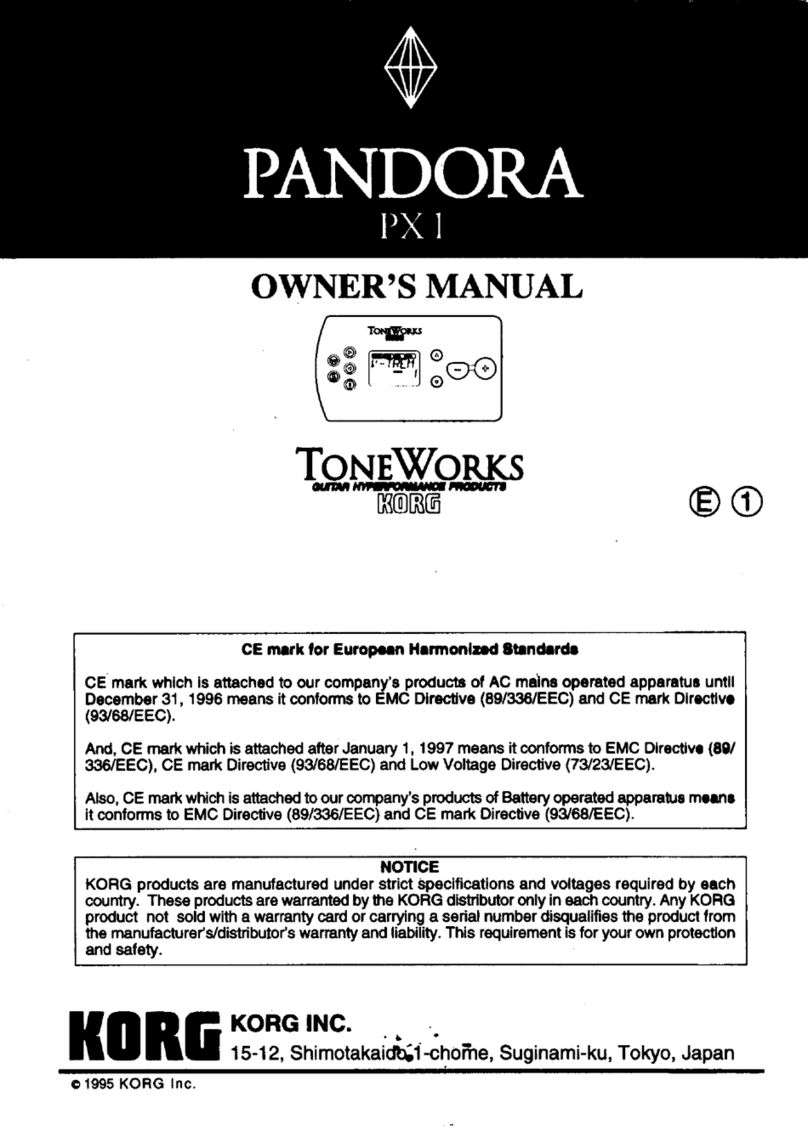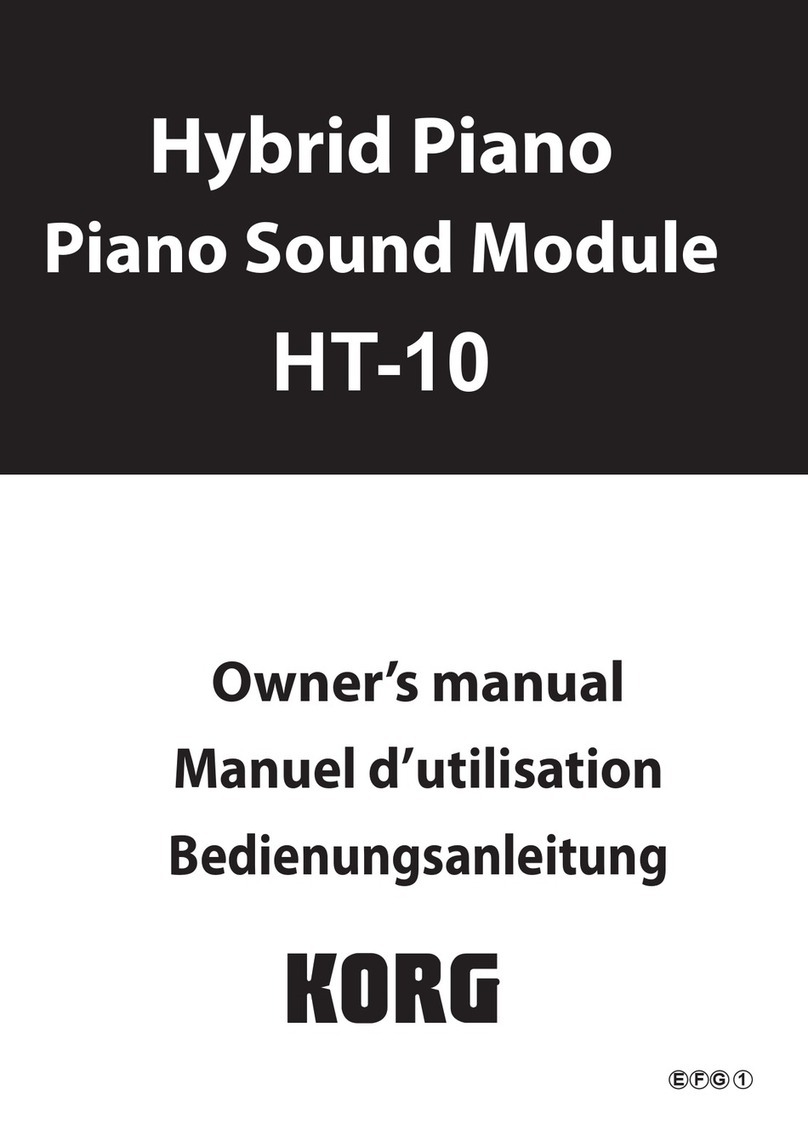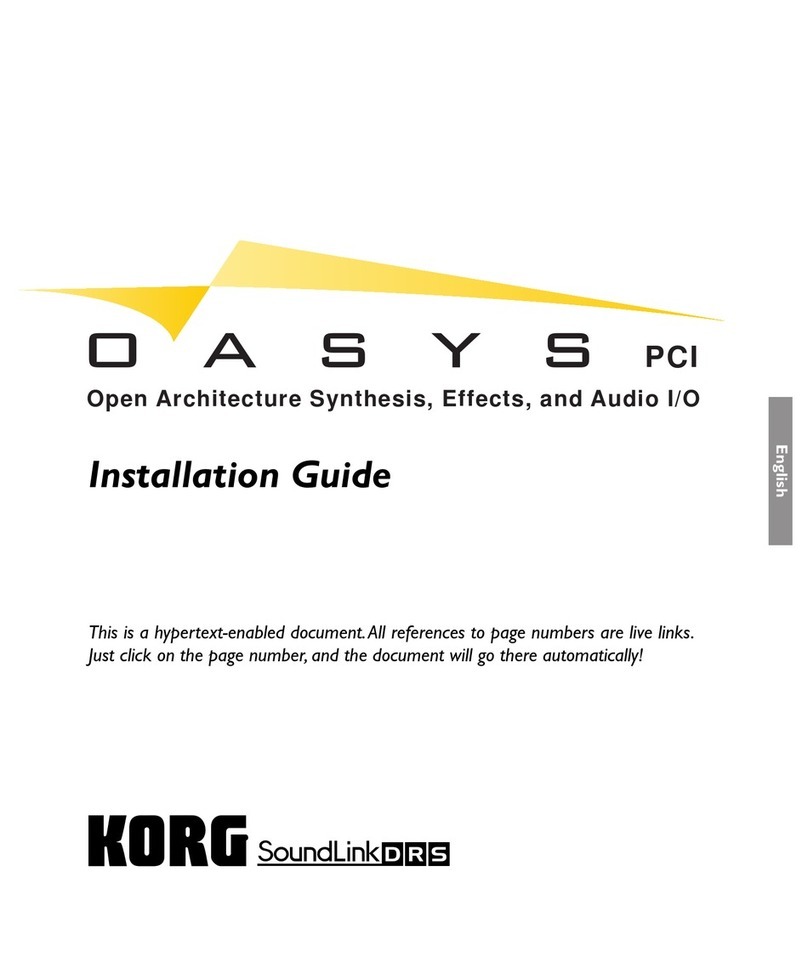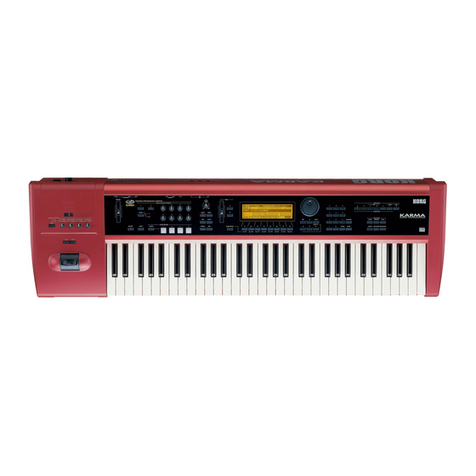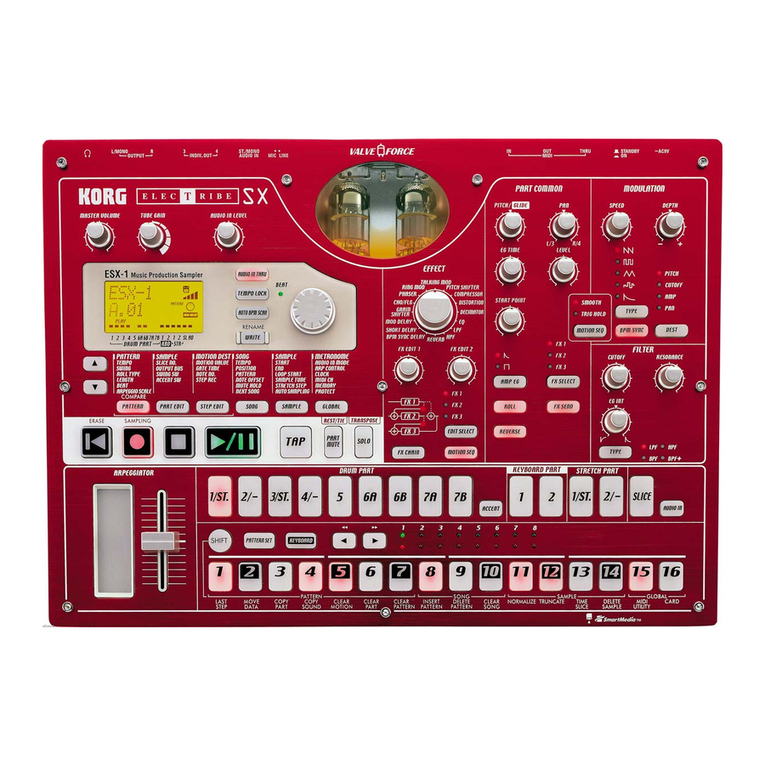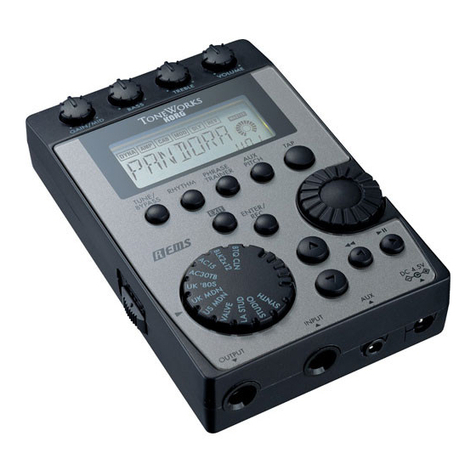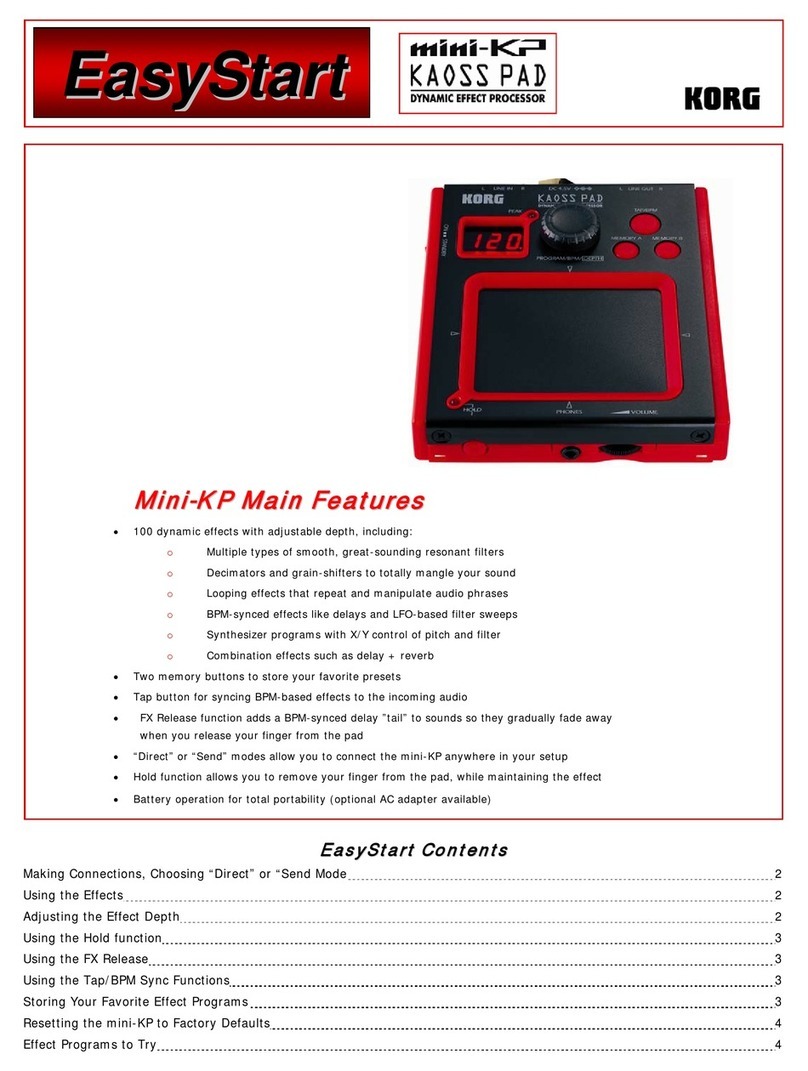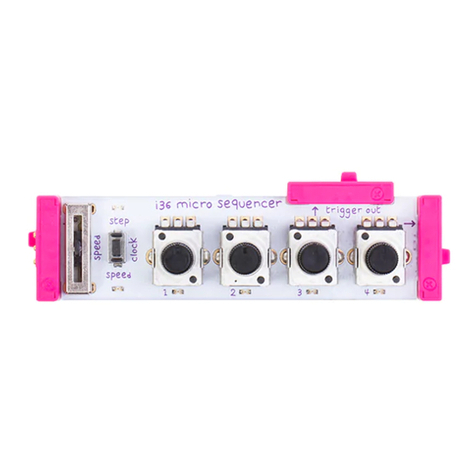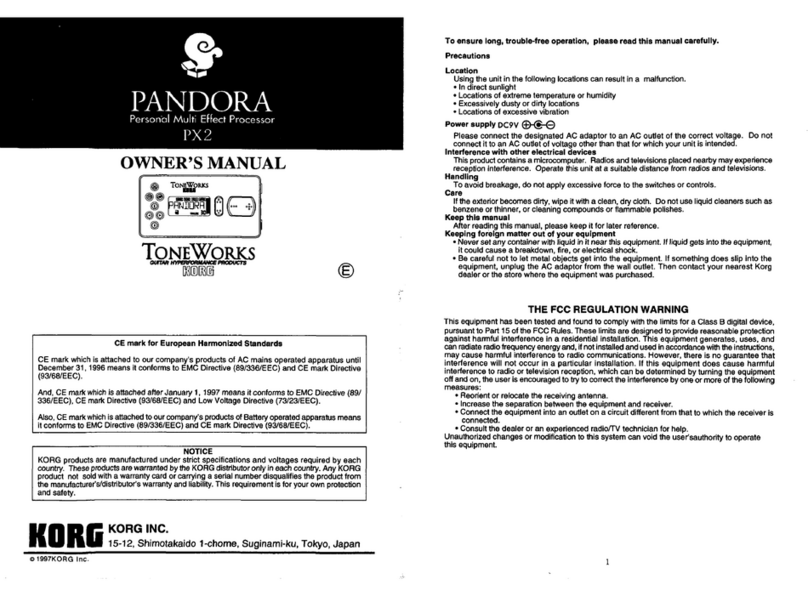
PX4B EasyStart
4
4. To rewind a segment of the recording press the ◄arrow button.
5. To stop recording, press the ENTER/RECORD button at any point and it will automatically loop the recorded segment.
! The unit will only rewind as long as you hold down the button. Playback will start when you release the button.
Tip If you press and hold the PHRASE TRAINER button while the phrase is playing, you will activate the HOLD function, to
hold the sound that was being played at the moment you pressed the button.
AUX Pitch / BASS Cancel mode:
AUX Pitch mode is used to transpose and/or tune an external source (CD, MiniDisk™, DAT, etc.) to your bass guitar.
The key can be transposed in a range of +/- one octave. The value can be adjusted upward and downward for 3
semitones in 10-cent steps, and in semitone steps of 100 cents for the remainder of the range. You can also apply the
Bass cancel effect to eliminate the low-frequency range of the external source.
To AUX Pitch mode:
1. Make sure your external source is connected to the AUX jack, and is playing.
2. Press the AUX PITCH button.
3. Use the DIAL to select the desired key and fine-tune the pitch.
To BASS Cancel mode:
1. Press the AUX PITCH button to alternate between Key Transpose (KEY-TRN) ONLY and “Key Transpose + Bass cancel”
(KTR + BC).
2. You can turn on only the Bass cancel function by setting the Key Transpose setting to “0” and selecting Key Transpose + Bass
Cancel. (output will be in mono in AUX Pitch mode)
3. Press the EXIT button to return to play mode.
Write your own Program:
1. Select an amp model with the AMP SELECTOR . Then you can adjust BASS, MIDDLE, TREBLE,and VOLUME with
the real time adjustment knobs.
2. Use the ►arrow button to move through the different menu pages: Dynamics, Amp, Cabinet, Modulation, Delay,
Reverb, Noise Reduction, TX (Optional wireless headphones), Name and Write.
3. When one of the menu blocks flashes, use the ▲or ▼arrow buttons to choose an effect.
4. Once an effect is selected, use the DIAL to select the desired amount of each effect.
5. To name and write an edited effect: When the cursor is flashing under a letter of the name, use the DIAL to select a
different letter or character, and the▲and ▼arrow buttons to move the cursor position. After you complete your new
name, press the ►arrow button to go to write mode (*WRITE* will display) . Use the DIAL to select one of 50 user
locations to save your preset to, and then press ENTER/REC. You will see the word “COMPLT” to confirm that you have
saved your Program to the selected location.

